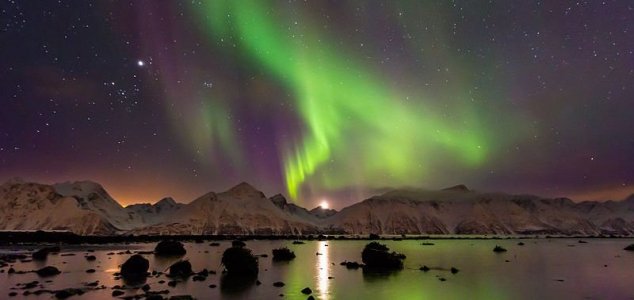
The Northern Lights as seen over Norway.
A glow similar to the Northern Lights has been picked up around a brown dwarf star 20 light years away.
The discovery marks the first time that such a phenomenon has been observed outside of our own solar system and suggests that brown dwarfs are a lot more like planets than previously realized.”Brown dwarfs span the gap between stars and planets and these results are yet more evidence that we need to think of brown dwarfs as beefed-up planets, rather than ‘failed stars’’,” said Dr Stuart Littlefair from the University of Sheffield.
The aurora display is produced when charged particles enter a planet’s magnetic field and collide with the gas atoms in its atmosphere. In contrast to the Northern Lights here on Earth however the aurora on the brown dwarf star is a lot redder in color and thousands of times more intense.
The form of the aurora, occurring within bands around both polar regions, is also dependent on the amount of acceleration imparted to the precipitating particles. Precipitating protons generally produce optical emissions as incident hydrogen atoms after gaining electrons from the atmosphere. Proton auroras are usually observed at lower latitudes
Auroras are occasionally seen in latitudes below the auroral zone, when a geomagnetic storm temporarily enlarges the auroral oval. Large geomagnetic storms are most common during the peak of the eleven-year sunspot cycle or during the three years after the peak.
“We’re finding that brown dwarfs are not like small stars in terms of their magnetic activity; they’re like giant planets with hugely powerful auroras,” said Dr Gregg Hallinan.
Originally posted 2015-09-01 15:05:04. Republished by Blog Post Promoter













